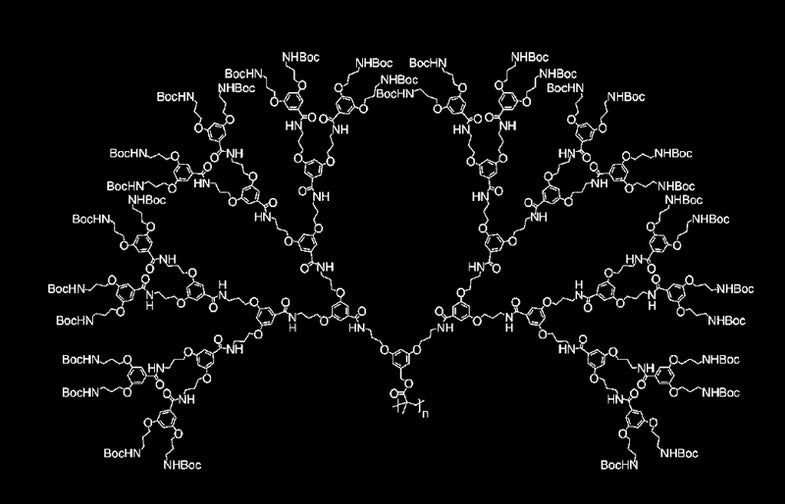What Is The Biggest Molecule
The Largest Molecule Ever Made Could Be Used to Deliver Drugs
Organic chemists in Switzerland have built a ginormous virus-sized macromolecule — information technology has 170,000 bail-forming chemical reactions — calling it...

Organic chemists in Switzerland have congenital a ginormous virus-sized macromolecule — it has 170,000 bond-forming chemic reactions — calling it a major step in the cosmos of molecular objects.
The molecule, called PG5, is the biggest constructed molecule with a stable, defined class. Like structures exist in nature, but they are hard to indistinguishable, because they fall apart during creation, as New Scientist explains. Future molecular objects would need to go along their structure regardless of their environs, and PG5 is a step in this management. Its structure is similar to that of a tobacco virus, and it keeps this rod-like construction in various conditions — information technology resists flattening out on a surface, for case.
PG5 is 10 nanometers in diameter and weighs as much equally 200 one thousand thousand hydrogen atoms. This is far bigger than the previous tape-holder, polystyrene polymers that were just twoscore meg hydrogen atoms. Still, it'southward but a fraction of the molecular weight of Deoxyribonucleic acid.
New Scientist describes how researchers at the Swiss Federal Establish of Technology in Zürich built their molecule, adding benzene and nitrogen branches to a carbon-hydrogen courage. Synthesizing the whole molecule required 170,000 reactions, and the outcome is a foldy, tree-like structure. Scientists say PG5 could hold drugs in its multitudinous branches, and it is a step toward molecular objects that proceed their forms regardless of their surroundings.
There are plenty of constructed nano-objects, but these are made of multiple molecules, not a single, gigantic crablike one.
The molecule was described in a recent result of the chemistry journal Angewandte Chemie.
New Scientist
What Is The Biggest Molecule,
Source: https://www.popsci.com/science/article/2011-01/most-massive-synthetic-molecule-could-be-used-deliver-drugs-or-make-new-materials/
Posted by: owensgiand1987.blogspot.com


0 Response to "What Is The Biggest Molecule"
Post a Comment